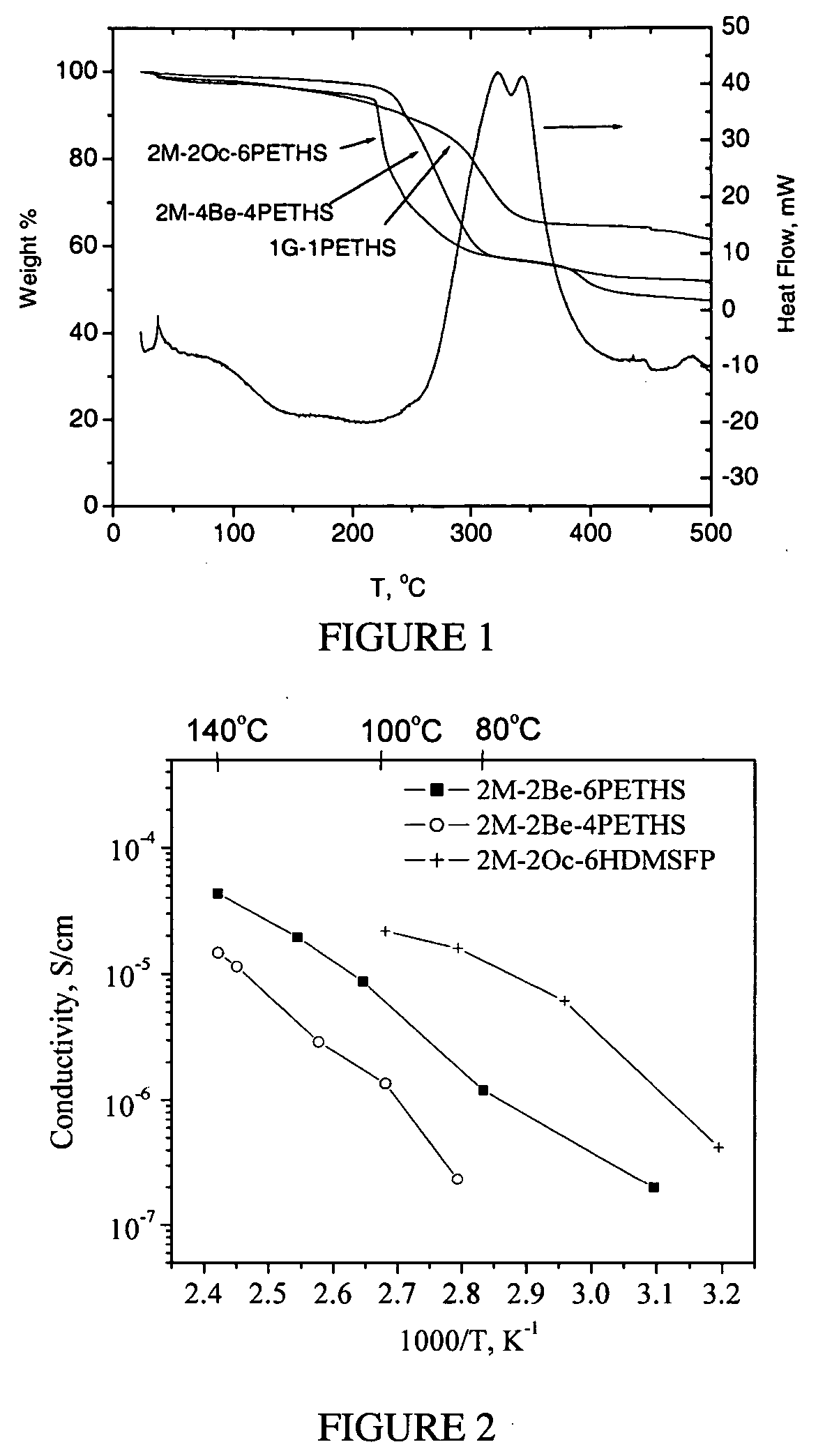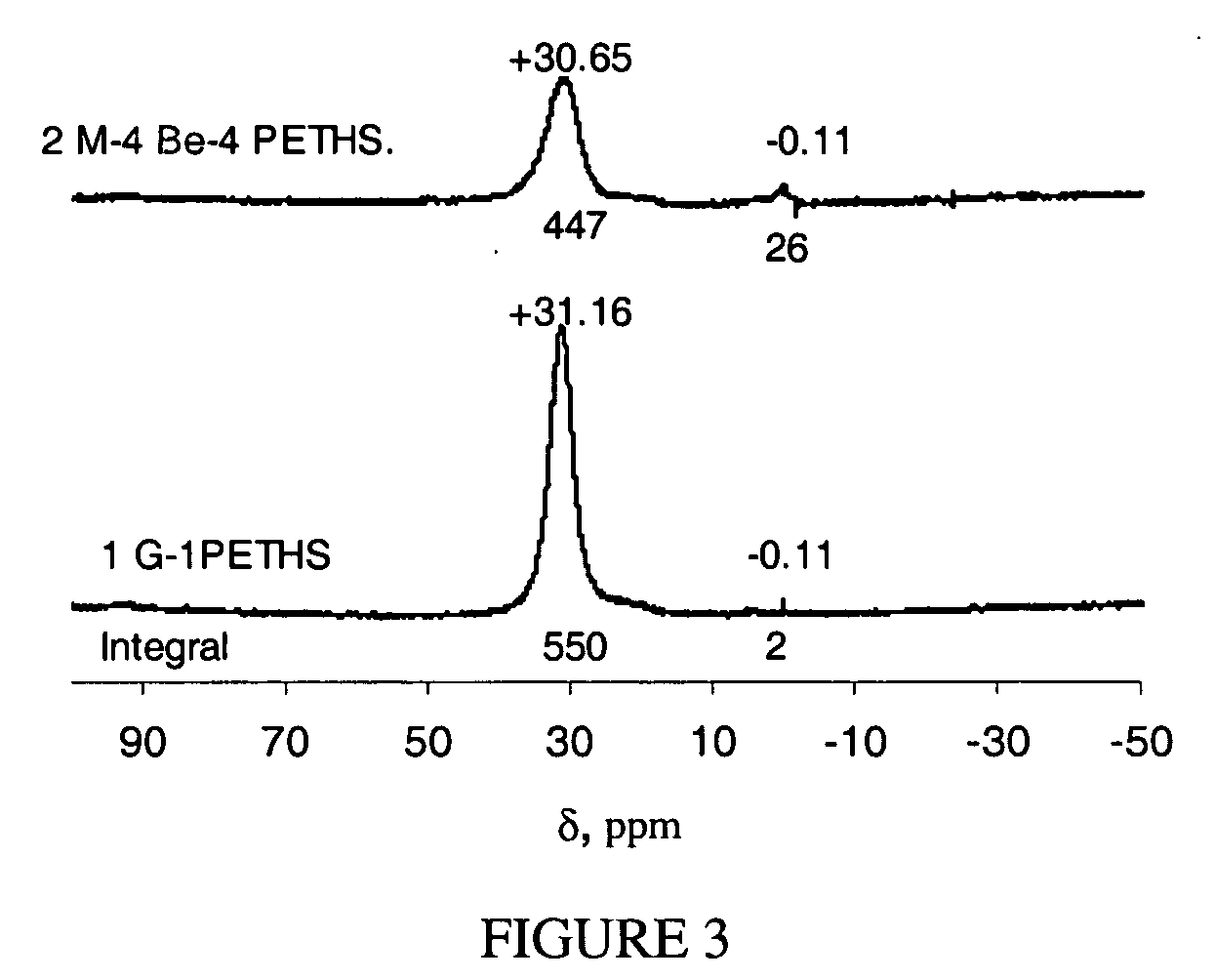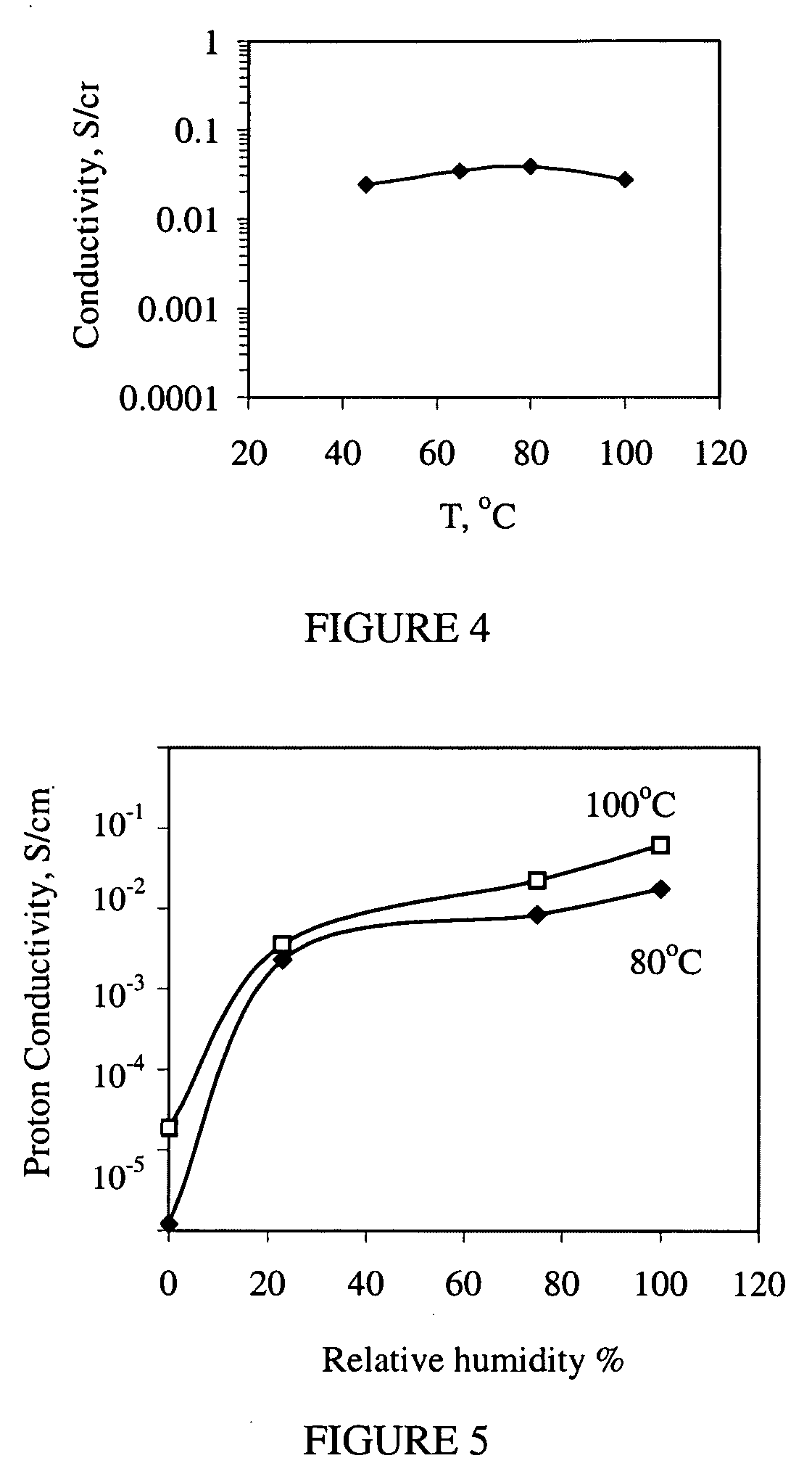Phosphonic-acid grafted hybrid inorganic-organic proton electrolyte membranes (PEMs)
a proton electrolyte and phosphonic acid technology, applied in the field of polymer, can solve the problems of high cost, dimensional change with water content, and insufficient performance of existing membranes for many applications
- Summary
- Abstract
- Description
- Claims
- Application Information
AI Technical Summary
Benefits of technology
Problems solved by technology
Method used
Image
Examples
example 1
[0082] Synthesis of precursor (3-(4-vinylbenzylthio)propyl)diethoxy(methyl)silane: the precursor of (3-(4-vinylbenzylthio)propyl)diethoxy(methyl)silane was synthesized in the process as shown below in Scheme 6. 10 mmole of potassium ethanolate (3.507 g of 24% ethanol solution) was added to the solution of 10 mmole 3-(diethoxy(methyl)silyl)propane-1-thio in 20 ml of ethanol.
[0083] The mixture was stirred for 5 minutes, and then 10 mmole of p-vinylbenzyl chloride was added dropwise, and stirred for 12 hours. The white precipitate KI was removed by filtration. About 2.6 g of colorless viscous liquid was separated from the filtrate through a silicate gel column chromatography eluted with ethyl acetate and hexane (⅓ in volume) (yield 80.2%). 1H NMR data: 7.33 (4H, m), 6.70 (1H, m), 5.72 (1H, d, JH-H=17.58), 3.77 (6H, m), 2.43 (2H, t, JH-H=7.30, 1.63 (2H, m), 1.23 (6H, m), 0.67 (2H, m), 0.09 (3H, s).
example 2
[0084] Synthesis of [4-(diethoxymethylsilyl)-1,1-difluoro-butyl]-phosphonic acid diethyl ester (DMSFP). 5 g (23.4 mmol) diethyl-1,1-difluorobut-3-enylphosphonate was mixed with 7.5 g (56 mmol) diethoxymethylsilane and several drops of hydrogen hexachloroplatinate (IV) solution (5% in isopropanol). After stirring at 60° C. overnight, the solution was evaporated under reduced pressure to remove the reactants and product [4-(diethoxymethylsilyl)-1,1-difluoro-butyl]-phosphonic acid diethyl ester (DMSFP, 6 g, 16.6 mmol, yield 71%) was provided. See Scheme 7. 1H NMR (CDCl3): δ(ppm) 0.12(3H, s), 0.65 (2H, m), 1.21 (6H, t, JH-H=6.98), 1.35 (6H, 6, JH-H=7.06), 1.65 (2H, m), 2.15 (2H, m), 3.75 (4H, q, JH-H=6.98), 4.26 (4H, q, JH-H=7.06).
example 3
[0085] Synthesis of [4-(triethoxysilyl)-1,1-difluoro-butyl]-phosphonic acid diethyl ester (DSFP): 5 g (23.4 mmol) diethyl-1,1-difluorobut-3-enylphosphonate was mixed with 56 mmol triethoxymethylsilane and several drops of hydrogen hexachloroplatinate(IV) solution (5% in isopropanol). After stirring at 60° C. overnight, the solution was evaporated under reduced pressure to remove the reactants and the product [4-(triethoxysilyl)-1,1-difluoro-butyl]-phosphonic acid diethyl ester (DSFP, yield 50%) was provided. 1H NMR (CDCl3): δ(ppm) 0.67 (2H, m), 1.21 (9H, t, JH-H=6.98), 1.35 (6H, 6, JH-H=7.06), 1.70 (2H, m), 2.08 (2H, m), 3.85 (6H, q, JH-H=6.98), 4.26 (4H, q, JH-H=7.06).
PUM
| Property | Measurement | Unit |
|---|---|---|
| proton conductivity | aaaaa | aaaaa |
| thickness | aaaaa | aaaaa |
| thickness | aaaaa | aaaaa |
Abstract
Description
Claims
Application Information
 Login to View More
Login to View More - R&D Engineer
- R&D Manager
- IP Professional
- Industry Leading Data Capabilities
- Powerful AI technology
- Patent DNA Extraction
Browse by: Latest US Patents, China's latest patents, Technical Efficacy Thesaurus, Application Domain, Technology Topic, Popular Technical Reports.
© 2024 PatSnap. All rights reserved.Legal|Privacy policy|Modern Slavery Act Transparency Statement|Sitemap|About US| Contact US: help@patsnap.com










